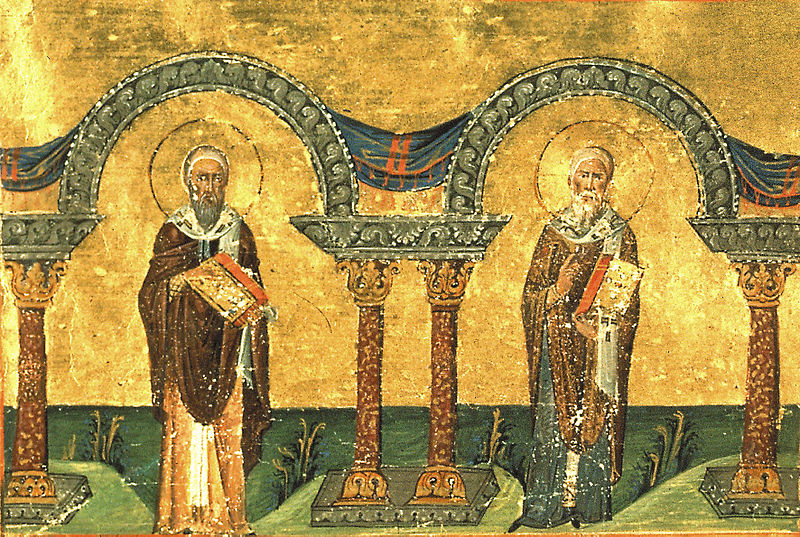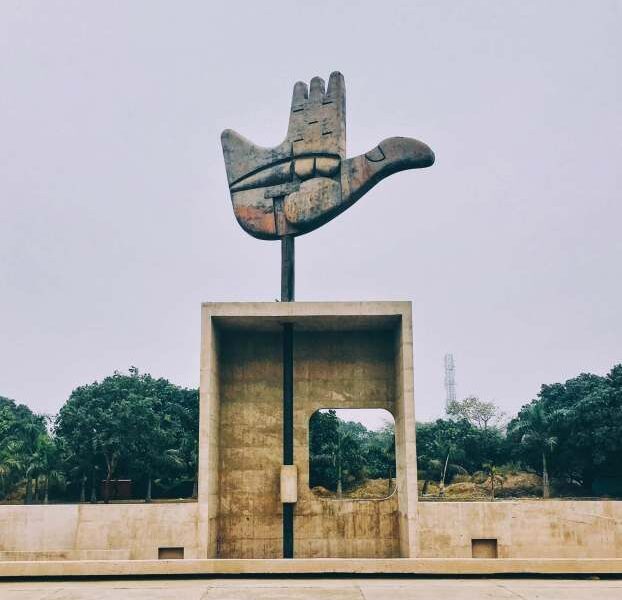Athanasius I of Alexandria[note 1], commonly known as Athanasius the Great, Athanasius the Confessor, or, among Coptic Christians, Athanasius the Apostolic, was a Coptic church father and the 20th Pope of Alexandria (as Athanasius I). His episcopacy lasted 45 years (c. 8 June 328 – 2 May 373), during which time he was exiled five times and removed on the orders of four different Roman emperors. Athanasius was a Christian theologian, a Church Father, the main supporter of Trinitarianism against Arianism, and a notable fourth-century Egyptian Christian leader. Athanasius’ career was characterized by his disagreements with Arius and Arianism, as well as with succeeding Roman emperors. Athanasius began his leadership position against the Arians as a deacon and assistant to Bishop Alexander of Alexandria during the First Council of Nicaea in 325, at the age of 27. In May-August 325, Roman Emperor Constantine the Great convened the council to confront the Arian doctrine that the Son of God, Jesus of Nazareth, is of a different essence from the Father. [5] Athanasius succeeded his master as the pope of Alexandria three years after the council. He fought against the Emperors Constantine, Constantius II, Julian the Apostate, and Valens, in addition to the Arians (including powerful and influential Arian churchmen led by Eusebius of Nicomedia).
Athanasius Contra Mundum (Latin for ‘Athanasius Against the World’) was his moniker. Nonetheless, Gregory of Nazianzus referred to him as the “Pillar of the Church” just a few years after his death. Following Church elders in the West and East praised his writings, citing their commitment to the Word-become-man, pastoral concern, and interest in monasticism. In the Catholic Church, Athanasius is regarded as one of the four great Eastern Doctors of the Church. Athanasius was the first to list the 27 books of the New Testament canon that are still in use today in his Easter letter of 367. The Eastern Orthodox Church, the Catholic Church, the Coptic Orthodox Church, the Anglican Communion, and Lutheranism all consider him a saint.
Biography
Athanasius was born between 293 and 298 to a Christian household in Alexandria, or possibly in the nearby Nile Delta town of Damanhur. The earlier date is sometimes assigned because of the maturity revealed in his two earliest treatises Contra Gentes (Against the Heathens) and De Incarnatione (On the Incarnation), which were most likely written around 318 before Arianism began to make its presence known, as those writings do not show an awareness of Arianism. Cornelius Clifford, on the other hand, places his birth no earlier than 296 and no later than 298, based on Athanasius’s lack of first-hand recollection of the Maximian persecution in 303, which he believes Athanasius would have known if he had been ten years old at the time. Second, according to the Festal Epistles, the Arians accused Athanasius, among other things, of not having reached the canonical age (35) and thus being unable to be legitimately ordained as the patriarch of Alexandria in 328. The accusation had to have appeared plausible. The Orthodox Church dates his birth around 297.
Education
His parents were rich enough to provide him with an excellent secular education. Despite this, he was not a member of the Egyptian aristocracy. Some Western academics believe that his grasp of Greek, in which he authored most (if not all) of his surviving writings, indicates that he was born in Alexandria. Given the regions of Egypt where he preached, historical evidence suggests that he was also conversant in Coptic. Some surviving copies of his writings are in Coptic, while researchers disagree on whether he initially authored them in Coptic (making him the first patriarch to do so) or whether these were translations of texts originally written in Greek.
Rufinus tells a story about Bishop Alexander standing by a window and seeing boys playing on the seashore below, imitating the Christian baptism ceremony. He summoned the youngsters and learned that one of the boys (Athanasius) had taken on the role of bishop. After questioning Athanasius, Bishop Alexander informed him that the baptisms were genuine because both the form and matter of the sacrament had been performed through the recitation of the correct words and the administration of water, but that he could no longer do so because those baptized had not been properly catechized. He encouraged Athanasius and his playmates to train as clerics.
During Athanasius’ childhood, Alexandria was the most important trading center in the empire. It exemplified the ethnically heterogeneous Graeco-Roman world more than Rome, Constantinople, Antioch, or Marseilles. While retaining its famous passion for orthodoxy since the days of Pantaenus, Clement of Alexandria, Origen, Dionysius, and Theognostus, its famous catechetical school had begun to take on an almost secular character in the breadth of its interests and had counted influential pagans among its serious auditors. Peter of Alexandria, the 17th Archbishop of Alexandria, was murdered in the latter days of the Great Persecution in 311 and may have been one of Athanasius’ teachers. Alexander of Alexandria succeeded him as bishop of Alexandria. “Bishop Alexander,” according to Sozomen.
Supporters
Athanasius is revered as a saint and teacher by Christians all across the world. As evidence of his goodness, they highlight his defense of the Christology provided in the first chapter of St. John’s Gospel[1:1-4] and his substantial theological works (C. S. Lewis calls On the Incarnation of the Word of God a “masterpiece”). They also highlight his strong association with Anthony the Great, an ancient monk who was a founder of the Christian monastic movement.








